The Bamboo Revolution in Your Living Room

Have you ever walked into someone’s home and wondered what made their floors look so darn good? I’m talking about that warm, rich appearance that makes you want to kick off your shoes and feel the smooth surface under your feet. Well, chances are you were admiring bamboo flooring without even knowing it.
We’ve been living with this misconception for years that hardwood is the gold standard for home flooring. Don’t get me wrong, oak and maple have their place, but bamboo is quietly stealing the show. The numbers don’t lie either. This grass-based flooring material is 73% harder than Jarrah, which is already considered a tough hardwood. That means your floor can handle whatever life throws at it, from muddy dog paws to stiletto heels.
I remember when my neighbor first mentioned bamboo flooring to me three years ago. My immediate reaction was skeptical. “Isn’t that just for pandas?” I asked, only half-joking. Boy, was I wrong. After doing my research and eventually installing bamboo floors in my own kitchen, I can tell you that this material has completely changed how I think about home improvement.
The environmental angle is what initially caught my attention, but the practical benefits kept me interested. We’re talking about a flooring option that’s not only kinder to our planet but also kinder to our wallets. The cost difference alone made my accountant brain happy, coming in 25 to 50 percent less than traditional hardwood options.
What really sold me was seeing how bamboo performs in real-world situations. My friend Sarah has three kids under ten, two cats, and a golden retriever named Max who thinks he’s still a puppy. Her bamboo floors have been through birthday parties, science experiments gone wrong, and countless spills. They still look fantastic after four years.
The color consistency is another game-changer. With traditional hardwood, you might get beautiful variation, but sometimes that variation isn’t what you wanted. Bamboo gives you predictable results through a controlled manufacturing process. When you see a sample in the showroom, that’s exactly what you’ll get throughout your entire installation.
Bamboo Flooring’s Rise to Fame
The bamboo flooring industry has been experiencing what I can only describe as a quiet revolution. While everyone was busy debating granite countertops versus quartz, bamboo was steadily winning over homeowners across America. The growth in popularity isn’t just about following trends – it’s about people discovering a superior product.
Let me paint you a picture of what bamboo actually is. This isn’t your garden-variety grass we’re talking about. Bamboo is like the superhero of the plant kingdom. It grows fast, bends without breaking, and has natural properties that make termites turn up their noses and look elsewhere for dinner. The flexibility factor is huge. When other materials might crack under pressure, bamboo just rolls with the punches.
I’ve seen traditional hardwood floors in older homes where you can spot every stress point. Knots become weak spots, and the natural grain patterns sometimes work against the wood’s structural integrity. Bamboo sidesteps these issues entirely. Since it doesn’t develop knots or rays as it grows, the final product maintains consistent strength throughout each plank.
The installation versatility is something that initially surprised me. You can put bamboo flooring over concrete slabs, existing vinyl, plywood subfloors, and even other wood floors. We installed ours over our old laminate flooring without any issues. The radiant floor heating compatibility was the cherry on top for our master bathroom project.
What makes bamboo particularly appealing to homeowners is its resilience. I’ve watched friends struggle with hardwood floors that seem to show every scratch, ding, and water mark. Meanwhile, bamboo floors in similar households maintain their appearance much longer. The material’s natural composition seems designed to handle the chaos of daily life.
The manufacturing process has come a long way too. Early bamboo flooring had quality control issues, but today’s products undergo rigorous testing and quality checks. Reputable manufacturers have refined their techniques to produce flooring that rivals any premium hardwood option on the market.
The Environmental Champion: Why Bamboo Wins the Green Game
Here’s where bamboo flooring becomes the environmental superhero story we all need to hear. When I started researching the ecological impact of different flooring options, the differences were staggering. Traditional hardwood flooring requires us to cut down trees that have been growing for decades, sometimes centuries.
Think about this for a moment. An oak tree needs 20 to 80 years to reach maturity. That’s potentially longer than most of us will live in our current homes. When we harvest these trees, we’re not just taking the wood – we’re removing an entire ecosystem. The roots that held soil in place are gone, leading to erosion. The oxygen production stops, and carbon dioxide levels in the surrounding area increase.
Bamboo operates on a completely different timeline. This remarkable plant can grow over four feet in a single day. I’m not exaggerating – there are time-lapse videos online that will blow your mind. While your morning coffee is brewing, bamboo somewhere is growing taller than your toddler. The plant reaches full maturity in just six months, which means we can harvest it repeatedly without depleting the resource.
The root system is where bamboo really shines from an environmental perspective. When we harvest bamboo, we cut the stalks but leave the roots intact. These roots continue to prevent soil erosion, maintain the local ecosystem, and produce new shoots. It’s like having a renewable resource that maintains itself. We don’t need to replant anything – nature handles the regeneration process.
Forest statistics tell a sobering story. Forests cover 31 percent of our planet’s land surface, but that number is shrinking. Eighty percent of terrestrial species depend on forests for their habitat. When we continue to harvest trees at current rates without sustainable practices, we’re gambling with biodiversity on a global scale.
The bamboo harvest cycle operates every three to seven years, depending on the specific variety. This regular harvesting actually benefits the plant’s health and vigor. It’s counterintuitive, but cutting bamboo makes it stronger and more productive. Compare this to trees, which may take decades to replace once harvested.
What really opened my eyes was learning about the carbon footprint comparison. Bamboo absorbs more carbon dioxide per acre than most tree species. It produces 35% more oxygen than equivalent stands of trees. When you choose bamboo flooring, you’re essentially voting for a material that actively helps combat climate change during its growth phase.
The Amazing Benefits That Made Me a Believer
Let me walk you through the benefits that transformed me from a bamboo skeptic to a bamboo evangelist. The durability factor was the first thing that caught my attention. That 73% hardness advantage over Jarrah isn’t just a number – it translates to real-world performance that you’ll notice every day.
We have friends with small children who seem to view floors as personal obstacle courses. Toy cars get driven at full speed across the surface, blocks get dropped from impressive heights, and juice boxes somehow always end up upside down. Their bamboo floors handle this daily assault without showing significant wear. Try that with some softwood options and you’ll be refinishing within a year.
The color consistency benefit became apparent during our installation process. With traditional hardwood, you often get beautiful natural variation, but sometimes that variation works against your design vision. Bamboo’s controlled manufacturing process delivers predictable results. The caramelization process creates consistent coloring throughout each batch, so the sample you approve in the showroom matches what gets installed in your home.
Maintenance was another pleasant surprise. I expected to spend weekends caring for these floors like I did with our previous hardwood installation. Instead, bamboo floors require minimal upkeep. Regular sweeping or vacuuming handles most cleaning needs. The occasional damp mop takes care of anything more stubborn.
The dust resistance quality is something allergy sufferers will appreciate. Traditional hardwood floors can harbor dust particles in their grain patterns, but bamboo’s smooth surface doesn’t provide the same hiding spots for allergens. My wife’s seasonal allergies improved noticeably after our bamboo installation.
Cleaning spills became much less stressful. With our old floors, any liquid spill was a race against time to prevent staining or warping. Bamboo’s natural water resistance gives you breathing room. You still need to clean up spills promptly, but you don’t need to panic if you don’t notice something immediately.
The installation timeline impressed our contractor and us. Most bamboo flooring products arrive pre-finished and ready for installation. Our entire kitchen floor was completed in one day, and we were cooking dinner on it that evening. Compare this to hardwood installations that often require on-site finishing and several days of curing time.
Temperature stability is another practical advantage. Traditional hardwood expands and contracts significantly with seasonal temperature changes. This movement can create gaps in winter and buckling in summer. Bamboo responds much more subtly to temperature fluctuations, maintaining a consistent appearance year-round.
The Honest Truth: Where Bamboo Falls Short
I’d be doing you a disservice if I didn’t discuss the limitations of bamboo flooring. Like any product, bamboo has situations where it isn’t the best choice. Understanding these limitations upfront helps you make an informed decision for your specific circumstances.
Manufacturing quality varies significantly between producers. Low-grade bamboo flooring can experience splitting, where the layers separate over time. I’ve seen installations where poor manufacturing led to visible seams and uneven surfaces. The key is choosing reputable manufacturers, even if it means paying a premium upfront.
The moisture limitation is real and needs careful consideration. While bamboo is more water-resistant than many hardwood options, it still doesn’t belong in consistently high-moisture environments. Bathrooms, saunas, and enclosed porches can create humidity levels that cause bamboo to warp or swell over time.
I learned this lesson when we initially considered bamboo for our master bathroom. Our contractor strongly advised against it, explaining that even with excellent ventilation, the combination of shower steam and floor-level humidity would likely cause problems within a few years. We ended up choosing porcelain tile that mimics wood grain for that space.
The delamination risk with lower-quality products is something to watch for. Cheap bamboo flooring sometimes uses inferior adhesives between layers. These adhesives can fail over time, causing the top layer to separate from the core. This creates an unsightly and potentially unsafe surface that requires complete replacement.
Finish durability varies based on the manufacturing process. Some bamboo floors come with finishes that wear quickly in high-traffic areas. The entrance to our kitchen shows slight wear patterns after three years of heavy use. This isn’t necessarily a deal-breaker, but it’s something to factor into your long-term maintenance plans.
Refinishing options can be limited depending on the bamboo flooring type. Some engineered bamboo products have thin top layers that can’t handle traditional refinishing processes. Before purchasing, ask about refinishing possibilities and how many times the floor can be renewed if needed.
The aesthetic may not suit every design vision. Bamboo has a distinctive look that works beautifully in many settings but might clash with certain traditional or rustic design themes. I’ve seen bamboo installations that looked out of place because the homeowners didn’t consider how the material would integrate with their overall design scheme.
Making the Smart Choice for Your Home
After living with bamboo floors for three years and watching friends navigate their own flooring decisions, I can confidently say that bamboo deserves serious consideration for most homes. The combination of environmental benefits, cost savings, and practical performance makes it a smart choice for families who want beautiful floors without the traditional hardwood compromises.
The decision ultimately comes down to your specific needs, budget, and design preferences. If you’re dealing with high-moisture areas, bamboo probably isn’t your best option. If you’re looking for maximum durability, environmental responsibility, and cost-effectiveness for your main living areas, bamboo floors offer an excellent solution.
My advice is to visit showrooms, see bamboo installations in person, and talk to homeowners who have lived with these floors for several years. The real-world performance stories will give you better insights than any specification sheet. Don’t forget to verify the manufacturer’s reputation and warranty terms before making your final decision.
The flooring industry continues evolving, but bamboo has proven itself as more than just a trend. It represents a practical approach to home improvement that balances performance, cost, and environmental responsibility. Whether you’re building new or renovating existing space, bamboo flooring deserves a spot on your consideration list.


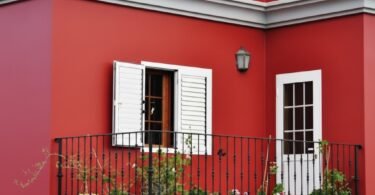
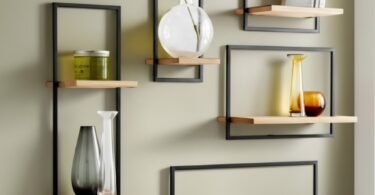
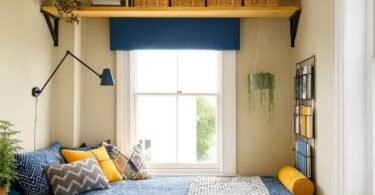
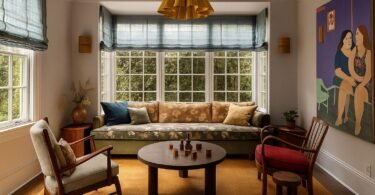
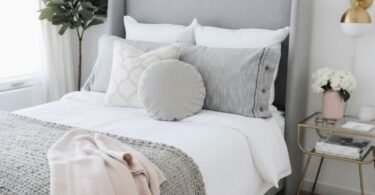
Leave a Comment